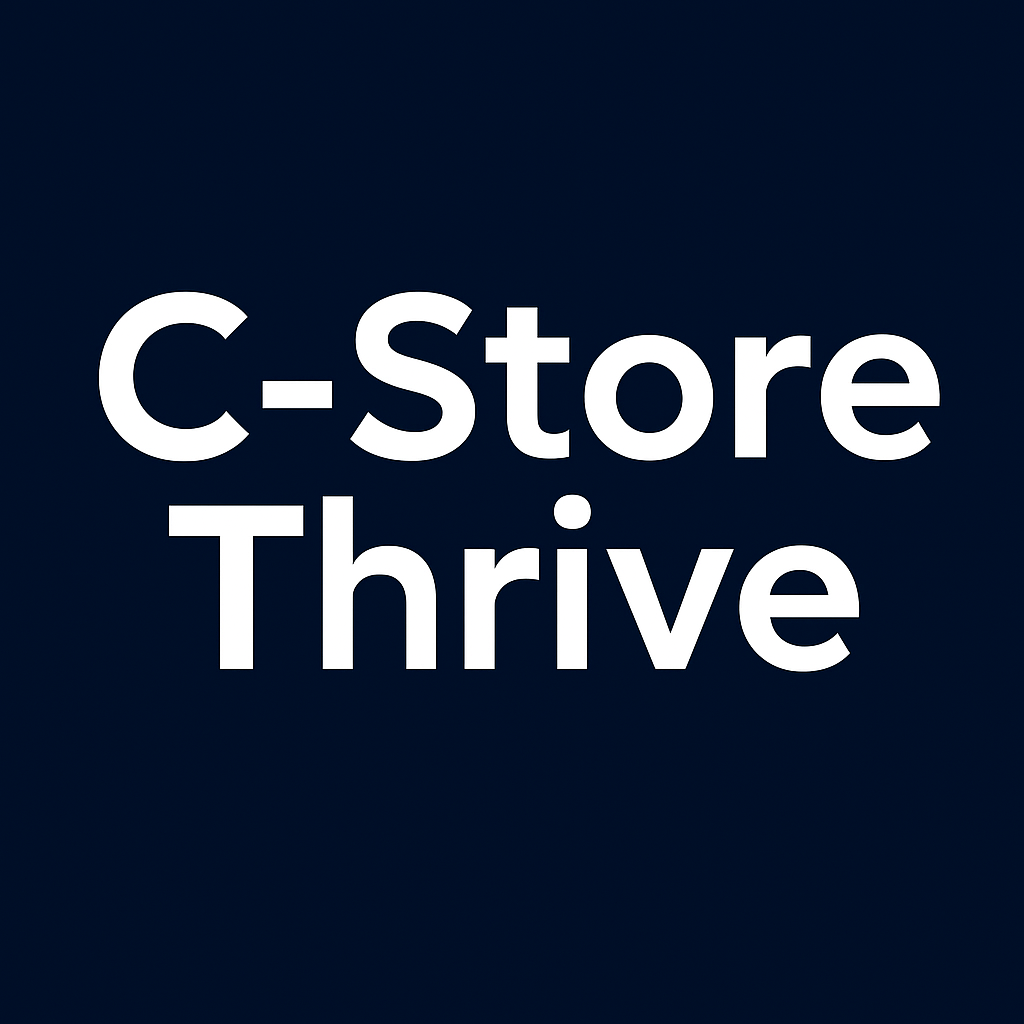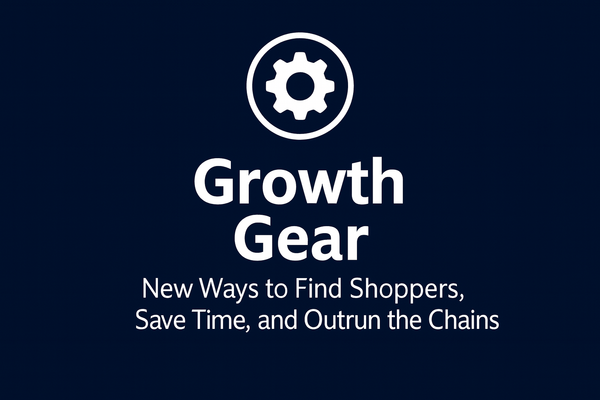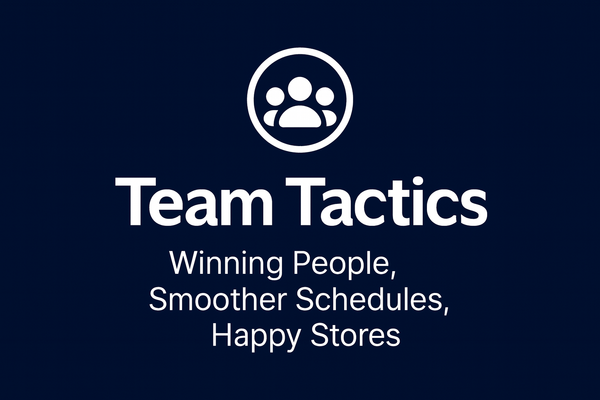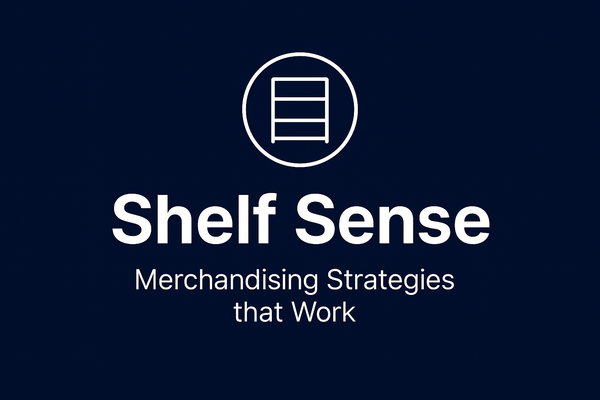Creating a Positive Store Culture from the Ground Up
Independent convenience stores with strong cultures report turnover rates 30-40% below industry averages and 25% higher customer satisfaction. Poor culture costs stores $15,000-25,000 annually in turnover expenses, while positive cultures see 10-15% higher profitability.
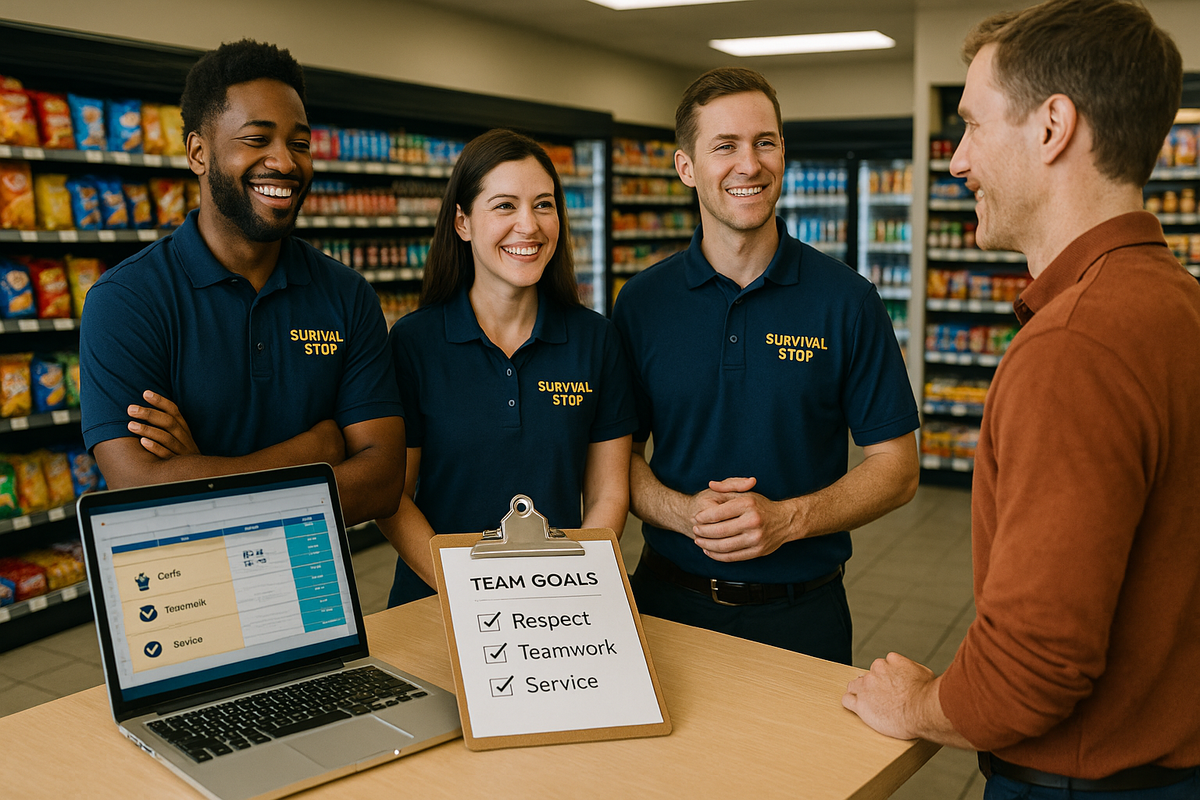
Building a thriving store culture isn't about corporate-style mission statements or expensive team-building retreats—it's about creating an environment where employees genuinely want to come to work, customers feel welcome, and your business becomes the kind of place that generates loyalty and profits. Here's how independent convenience store owners can cultivate positive culture that drives real results.
Independent convenience store operators face a stark reality: the average convenience store experiences 146% annual turnover, with some locations seeing complete staff replacement every eight months. Yet stores with strong, positive cultures consistently report turnover rates 30-40% below industry averages and customer satisfaction scores 25% higher than their competitors. The difference isn't budget or location—it's the intentional cultivation of workplace culture that makes employees want to stay and customers want to return.
The financial impact is undeniable. Poor culture costs the average convenience store $15,000-25,000 annually in turnover-related expenses, including recruitment, training, lost productivity, and operational disruptions. Meanwhile, stores with positive cultures see 10-15% higher profitability through improved customer service, reduced shrinkage, better operational efficiency, and enhanced community reputation.
For independent operators, culture represents one of the few competitive advantages that can't be replicated by chain stores. While chains rely on corporate policies and standardized procedures, independent stores can create authentic, community-focused cultures that reflect their owners' values and serve their specific customer base better than any corporate playbook ever could.
Understanding the Foundation: What Culture Really Means
Beyond Buzzwords: Culture as Daily Reality
Store culture isn't what you post on the wall—it's what employees experience every day. Culture manifests in how team members treat each other during busy periods, how problems get solved, how new employees are welcomed, and how customers are served when management isn't watching.
Culture is the cumulative effect of what people see, hear, experience, and believe in your workplace. It's shaped by thousands of small interactions: whether employees help each other without being asked, how mistakes are handled, what behaviors get rewarded, and what standards are consistently maintained.
The Independent Store Advantage
Independent convenience stores possess unique cultural advantages that chains cannot replicate:
Personal Connection: Owner presence creates accountability and demonstrates investment in both employees and customers
Community Integration: Local roots enable authentic community engagement and cultural relevance
Operational Flexibility: Quick decision-making allows rapid response to employee needs and cultural issues
Values Alignment: Owner values can be directly translated into daily operations without corporate filter
The Four Pillars of Positive C-Store Culture
Pillar 1: Respect and Recognition
Respect forms the foundation of positive culture, but it must be demonstrated consistently through actions, not just words.
Daily Respect Practices:
- Acknowledge each team member's contributions during shift changes
- Listen actively when employees identify problems or suggest improvements
- Provide adequate breaks and reasonable scheduling that respects work-life balance
- Address customer complaints about employees fairly and privately
Recognition That Resonates:
- Celebrate specific achievements rather than generic praise ("Thanks for staying calm with that difficult customer" vs. "Good job")
- Recognize effort as much as results to encourage continuous improvement
- Make recognition timely—acknowledge good performance immediately when observed
- Include personal touches that show you know employees as individuals
Implementation Example:
Store owner Maria implements a "Daily Hero" board where she posts specific examples of employees going above and beyond. Rather than generic recognition, she writes things like "Carlos noticed the cooler temperature rising and called for service before we lost inventory" or "Jennifer took time to help an elderly customer find exactly what she needed." This specific recognition reinforces desired behaviors while showing employees their contributions matter.
Pillar 2: Communication and Transparency
Effective communication prevents most workplace conflicts and builds trust between management and staff.
Open Communication Systems:
- Regular team meetings to discuss goals, challenges, and operational changes
- One-on-one check-ins with employees to address concerns before they escalate
- Clear explanation of policies and the reasoning behind decisions
- Accessible feedback mechanisms that encourage honest input
Information Sharing:
- Share business performance data (appropriate level) so employees understand their impact
- Explain upcoming changes and involve employees in implementation planning
- Communicate expectations clearly and provide resources needed for success
- Address rumors and concerns promptly to prevent misinformation
Transparency in Action:
When independent owner David needed to adjust store hours due to slow overnight sales, he shared the sales data with his team and asked for input on the best implementation approach. Employees understood the business necessity and helped develop a transition plan that minimized disruption to customer service. This transparency prevented the resentment that often accompanies schedule changes.
Pillar 3: Growth and Development
Employees stay longer and perform better when they see opportunities for personal and professional growth.
Skill Development Opportunities:
- Cross-training in different areas (food service, inventory, customer service)
- Leadership responsibilities for reliable employees (training new hires, opening/closing)
- External training opportunities (food safety certification, customer service workshops)
- Mentorship programs pairing experienced employees with newcomers
Career Progression Paths:
- Clear advancement criteria and timelines
- Assistant manager or shift leader roles with increased responsibility
- Profit-sharing or performance bonuses tied to store success
- Opportunities to contribute to business decisions and improvements
Development Success Story:
Store owner Rachel identified employee Marcus as having management potential. She provided leadership training, gradually increased his responsibilities, and mentored him through challenging situations. Within eighteen months, Marcus became assistant manager with a $4/hour raise and profit-sharing. He now helps train other employees and has been with the store for three years—unusual in an industry with 146% turnover.
Pillar 4: Team Unity and Support
Strong teams support each other during challenges and celebrate successes together.
Fostering Team Bonds:
- Encourage collaboration rather than individual competition
- Create systems where helping teammates is recognized and rewarded
- Plan occasional team activities that build personal connections
- Address conflicts quickly and fairly to maintain team harmony
Mutual Support Systems:
- Flexible scheduling that accommodates personal emergencies
- Coverage systems that don't penalize employees for needing time off
- Problem-solving approaches that involve the team in finding solutions
- Shared responsibility for store success rather than individual blame
Implementation Strategy: Building Culture Systematically
Phase 1: Assessment and Foundation (Month 1)
Current Culture Audit:
- Anonymous employee survey about current workplace satisfaction
- Customer feedback analysis regarding service quality and store atmosphere
- Observation of employee interactions during different shifts and situations
- Identification of existing positive behaviors to build upon
Foundation Setting:
- Clear communication of cultural vision and values
- Establishment of behavioral expectations and standards
- Introduction of basic recognition and communication systems
- Beginning of regular team meetings and feedback sessions
Phase 2: System Development (Months 2-3)
Communication Infrastructure:
- Weekly team meetings with structured agendas
- Monthly one-on-one sessions with each employee
- Suggestion box or digital feedback system
- Regular sharing of business performance and goals
Recognition Programs:
- Daily/weekly recognition for specific positive behaviors
- Monthly employee spotlight with meaningful rewards
- Team achievement celebrations for store milestones
- Peer nomination systems for recognition awards
Phase 3: Growth and Integration (Months 4-6)
Development Programs:
- Individual development plans for each employee
- Cross-training schedules and skill-building opportunities
- Leadership development for high-potential employees
- External training and certification opportunities
Team Building:
- Problem-solving sessions involving entire team
- Collaborative goal-setting and achievement tracking
- Team activities that build personal connections
- Conflict resolution processes that strengthen relationships
Phase 4: Sustainability and Evolution (Months 7-12)
Culture Maintenance:
- Regular culture assessment and adjustment
- Integration of cultural values into hiring decisions
- Ongoing reinforcement of positive behaviors
- Continuous improvement based on employee and customer feedback
Overcoming Common Cultural Challenges
Challenge 1: High Turnover Disrupting Culture
The Problem: New employees joining toxic or weak cultures often adopt negative behaviors or leave quickly, creating a cycle of instability.
The Solution:
- Prioritize cultural fit in hiring decisions alongside skill requirements
- Implement comprehensive onboarding that emphasizes cultural values
- Assign cultural mentors to new employees during their first 90 days
- Address cultural issues immediately rather than hoping they'll resolve naturally
Success Metric: 90-day retention rate should improve from industry average of 64% to 85%+ within six months of cultural improvements.
Challenge 2: Owner Burnout Affecting Culture
The Problem: Overwhelmed owners working excessive hours often become irritable, inconsistent, or disengaged, undermining positive culture efforts.
The Solution:
- Develop reliable assistant managers or shift leaders to reduce owner burden
- Create systems and procedures that maintain standards without constant oversight
- Establish boundaries between work and personal time to prevent burnout
- Delegate cultural leadership responsibilities to trustworthy employees
Implementation: Owner Jennifer trained two assistant managers to handle daily operations, allowing her to focus on strategic improvements and culture building rather than constant firefighting.
Challenge 3: Difficult Customers Impacting Team Morale
The Problem: Abusive or unreasonable customers can demoralize employees and create negative workplace atmosphere.
The Solution:
- Clear policies supporting employees in difficult customer situations
- Training on de-escalation techniques and when to involve management
- Backing employees' reasonable decisions even when customers complain
- Creating safe spaces for employees to decompress after difficult interactions
Policy Example: "Our employees deserve respect. Customers who are abusive, threatening, or unreasonable will be asked to leave. We support our team members' safety and dignity above individual sales."
Challenge 4: Competing Priorities Between Efficiency and Culture
The Problem: Pressure to cut costs or increase efficiency can undermine cultural investments and employee satisfaction.
The Solution:
- Track cultural investments' return on investment through reduced turnover and improved performance
- Find efficiency improvements that enhance rather than undermine employee experience
- Communicate business pressures honestly while maintaining commitment to cultural values
- Involve employees in finding solutions that balance efficiency with positive culture
Measuring Cultural Success
Quantitative Metrics
Employee Satisfaction Indicators:
- Turnover rate (target: 30-40% below industry average)
- Absenteeism rate (target: less than 3% monthly)
- Internal promotion rate (target: 60%+ of management positions filled internally)
- Employee referral rate (target: 40%+ of new hires through employee referrals)
Business Performance Metrics:
- Customer satisfaction scores (target: 4.5+ out of 5.0)
- Average transaction value (cultural improvements should increase by 8-12%)
- Shrinkage rates (engaged employees reduce theft and waste)
- Profitability per employee (cultural improvements typically show 10-15% gains)
Qualitative Assessments
Regular Culture Surveys:
- Anonymous feedback on workplace satisfaction and culture
- Assessment of communication effectiveness and management support
- Evaluation of growth opportunities and recognition programs
- Open-ended feedback on cultural strengths and improvement areas
Observable Behavioral Changes:
- Increased collaboration and mutual support among employees
- Proactive problem-solving rather than reactive complaint patterns
- Positive customer interactions and service quality improvements
- Reduced workplace conflicts and faster conflict resolution
Advanced Cultural Strategies
Community Integration
Local Engagement:
- Encourage employees to participate in community events as store representatives
- Support local causes that employees care about
- Create partnerships with local organizations that reflect store values
- Celebrate community achievements and local connections
Customer Relationship Building:
- Train employees to remember regular customers' preferences
- Empower staff to resolve customer issues without excessive management approval
- Create systems for collecting and acting on customer feedback
- Position the store as a community gathering place rather than just a transaction point
Technology and Culture
Digital Communication Tools:
- Group messaging apps for quick communication and recognition
- Digital scheduling systems that provide flexibility and transparency
- Customer feedback apps that show employees the impact of their service
- Performance tracking systems that celebrate improvements and achievements
Social Media and Recognition:
- Employee spotlights on store social media accounts
- Community engagement showcasing employee contributions
- Behind-the-scenes content that highlights positive workplace culture
- Customer testimonials about specific employees and their service
Succession Planning and Cultural Continuity
Leadership Development:
- Identify employees with cultural leadership potential early
- Provide management training that emphasizes cultural values
- Create opportunities for emerging leaders to mentor newer employees
- Establish clear succession plans that maintain cultural continuity
Cultural Documentation:
- Written culture guide that captures values, expectations, and practices
- Story collection documenting cultural successes and learning experiences
- Training materials that new managers can use to maintain cultural standards
- Regular culture assessment tools to prevent drift over time
The Long-Term Vision: Sustainable Cultural Excellence
Building Cultural Resilience
Consistent Reinforcement:
Culture requires constant attention and reinforcement. Successful independent operators build cultural practices into daily operations so they become automatic rather than requiring special effort.
Adaptation and Growth:
Strong cultures evolve while maintaining core values. As businesses grow and markets change, cultural practices must adapt while preserving the fundamental principles that create positive workplace environments.
Legacy Thinking:
The best cultural investments create lasting impact that extends beyond individual employees or specific situations. When former employees speak positively about their experience and recommend others to work at the store, culture has achieved lasting success.
Community Impact
Ripple Effects:
Positive store culture extends beyond the workplace. Happy employees provide better customer service, creating positive community experiences. Satisfied customers become advocates, and engaged employees often become community leaders, enhancing the store's reputation and community standing.
Economic Benefits:
Stores with strong cultures typically see improved financial performance through multiple channels: reduced costs (lower turnover, less shrinkage), increased revenue (better customer service, higher transaction values), and enhanced profitability (operational efficiency, employee engagement).
Conclusion: Culture as Competitive Advantage
Creating positive store culture from the ground up requires intentional effort, consistent attention, and genuine commitment to employee wellbeing. However, the investment pays substantial dividends through improved employee retention, enhanced customer satisfaction, reduced operational costs, and increased profitability.
Independent convenience store operators possess unique advantages in culture building that chains cannot replicate. Personal relationships, community connections, operational flexibility, and authentic values create opportunities for cultural excellence that transcend corporate standardization.
Start with the fundamentals: respect and recognition, open communication, growth opportunities, and team unity. Build systematically, measure progress, and adjust approaches based on employee feedback and business results. Remember that culture is created through daily actions and interactions, not grand gestures or expensive programs.
The most successful independent convenience stores understand that culture is their competitive advantage. In an industry plagued by high turnover and customer service challenges, stores that create positive, supportive, growth-oriented cultures stand out in their communities and achieve sustainable success.
Ready to transform your store culture? Begin by honestly assessing your current workplace environment, identifying your biggest cultural challenges, and implementing systematic improvements that align with your values and business goals. The investment in positive culture will return multiplied through employee satisfaction, customer loyalty, and business success.
